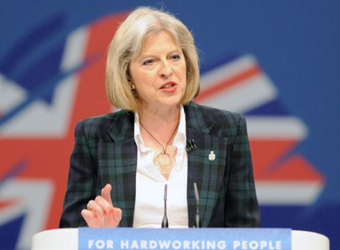Officially, the Federal Reserve is trying to stay out of the political debate in Washington over tax reform and other financial measures.
But with so much on the line for the economy, and with the outlook for fiscal policy growing more unclear, Fed officials in practice have been unable to stay mum. In interviews, speeches and even official documents, the Fed has increasingly been weighing in.
The minutes of the May policy meeting noted that, “A number of participants pointed out that clarification of prospective fiscal and other policy changes would remove one source of uncertainty for the economic outlook.” That’s Fedspeak for it’s hard to forecast when you don’t know what policies will be and we’d prefer if you got on with it.
The minutes also say Fed members view the possibility of expansionary fiscal policy changes in the United States as posing upside risks to their forecasts for U.S. economic growth. Translation: If you do it, it could be good.
Any kind of reform that reduces those distortions, for example by reducing write-offs or simplifying the code, will be seen as a positive for growth. Deregulation gets good reviews for similar reasons.
But many Fed members have made no secret that they see the full package of President Donald Trump’s economic proposals as a potential mixed bag, in part because it runs afoul of other basic tenets of economics.
Cleveland Fed President Loretta Mester is concerned about immigration reform. She said in a recent speech that immigrants make up 16 percent of the US workforce.
“Given U.S. demographics, immigrants will become an increasingly important source of labor supply for the U.S.,” she said. “This suggests that a well-thought-out immigration policy that attracts labor to the U.S. is also a necessary ingredient to support longer-run growth.” Translation: You need workers to grow the economy and you can’t do that if you keep workers out.
Dallas Fed President Robert Kaplan singles out health care reform as a potential negative if it reduces the number of insured Americans. That, in turn, could reduce spending and increase savings, he said.
“The reality is, some of the policies being discussed will help GDP: regulatory review, if it’s thoughtfully done, potentially infrastructure spending if it’s thoughtfully done, could help,” Kaplan told CNBC in an interview Tuesday. “But some of them could hurt GDP growth.”
Trade is another area of concern.
In a CNBC interview in March, Fed Vice Chairman Stanley Fischer noted that free trade “worked spectacularly for China (and) it worked for us.”
“We’ve been able to buy many, many things that we wouldn’t have been able to make had it all been up to us,” Fischer said. “So we benefit from that as well. … I’d be concerned if that basic model is overturned.”
There’s even concern over policies which Fed officials generally agree are positive. Deregulation gets high marks from the Fed, but the May minutes show that several members “expressed concerns that a possible easing of regulatory standards could increase risks to financial stability.”
And tax cuts and tax reform may be highly regarded, but Fed officials also want to know how they are paid for.
“If it’s a tax cut financed by increase in the deficit, my concern is that may give a short-term bump to GDP growth but not a sustainable bump,” Kaplan said. “We’ll have higher debt-to-GDP and I think that would be negative to economic growth.”
Fed Governor Lael Brainard is skeptical that so-called supply side tax cuts will do much to boost supply and instead increase “demand at a time when the economy could be at full employment.”
The unstated implication is that tax cuts could drive inflation higher and force the Fed to respond with additional rate hikes. There is also widespread skepticism that President Trump’s goal of hitting 3 percent is possible.
Fed Chair Janet Yellen has remained on the sidelines of much of the debate, though she did warn in a February testimony about the possible deficit implications of tax cuts. She has consistently urged Congress and the Administration to pursue “policies that would boost productivity growth and raise the economy’s so-called speed limit or potential to grow” but not been very specific about what would do that. She has mentioned education and infrastructure spending as two policies that could help.
The trouble is that, while much Fed support and criticism of the president’s economic policies come from generally held beliefs in economics, there isn’t a single set of policy tools that all agree would boost productivity.
Source: CNBC


